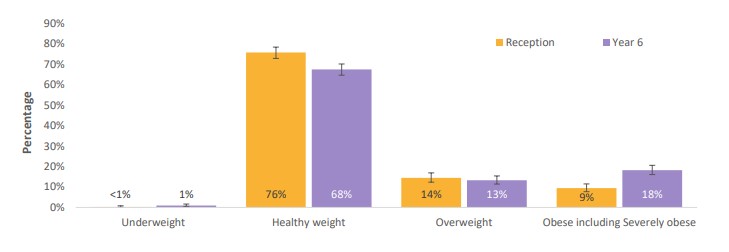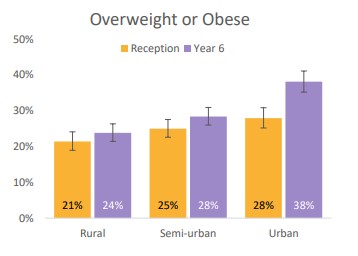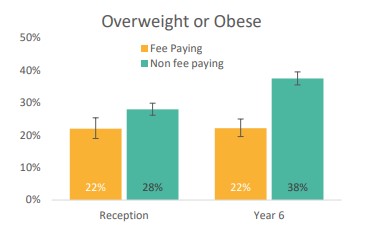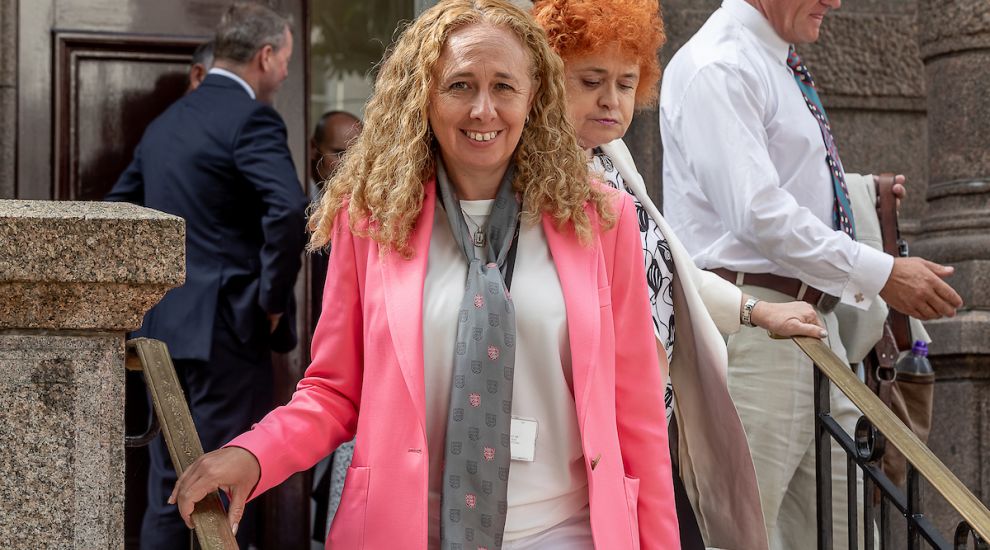


Jersey’s latest Child Measurement Report found that a quarter of local children in their first year of school are overweight or obese.
The report – which regularly analyses the Body Mass Index of children in two different year groups – also found that the figure for overweight or obese children rose to include nearly a third of pupils in Year 6.
Children living in rural areas in Year 6 were less likely to be overweight or obese than those living in urban areas.
Professor Peter Bradley, Director of Public Health, said that there was a "glimmer of hope" that some Government interventions were working, as the number of children in Reception classed as "obese" was marginally lower (9%) than compared to the previous year (12%).

One-in-four children in Reception (24%) were overweight or obese, while around three-in-ten children in Year 6 (32%) were overweight or obese.
The proportion of Reception children classified as overweight or obese increased to 27% between 2017/2019 and 2021/2023, having remained at around 20% over the previous 20 years.
Children's and Education Minister Inna Gardiner said: "It is concerning that the Child Measurement Report shows high levels of obesity among primary school children.
"All children have a right to good health, and we can support this right in many ways."
The proportion of children in Reception categorised as overweight and obese was similar in Jersey (24%) as in England (22%).
However, the proportion of children in Year 6 categorised as overweight and obese was lower in Jersey (32%) than that in England (38%).

The parish of residence of each child was categorised as "urban" (St Helier), "semi-urban" (St Brelade, St Clement, St Saviour), or "rural" (Grouville, St John, St Lawrence, St Martin, St Mary, St Ouen, St Peter, Trinity).
The proportion of children classified as overweight or obese in "urban" parishes in Reception (28%) was higher than the proportion in "rural" areas (21%) as seen in previous years.
In "urban" parishes in Year 6 the prevalence of children classified as overweight or obese was higher (38%) than the proportion in "rural" (24%) and "semi-urban" (28%) areas.
A similar proportion of children living in "urban" parishes in Reception were obese (9%) compared to those living in "rural" and "semi-urban" areas (7% and 8% respectively).
For Year 6 children living in "urban" parishes, a higher proportion were obese (17%) compared to those living in "rural" and "semi-urban" areas (11% and 13% respectively).

The report highlighted a wealth divide in Jersey, with a higher proportion of children who attended "non-fee-paying schools" being overweight or obese (28% in Reception and 38% in Year 6), compared to children who attended "fee-paying schools" (22% in both cases).
This gap has been widening over the last nine years.
Deputy Gardiner said: "Within schools, we already work closely with Public Health to deliver several education programmes for children and families.
"This includes promoting a Whole School Food approach, to bring the community together to make healthy eating the easy and attractive choice; Food Dudes, which aims to change children's attitudes to fruit and vegetables; and the Family Food and Fitness Programme, which works with families to make positive changes to their eating and exercise routines."

Pictured: Children's and Education Minister, Deputy Inna Gardiner.
She continued: "We also partner with Caring Cooks to provide the Let's Get Cooking Programme in primary schools, so children learn how to make healthy meals themselves.
"Alongside this work on changing behaviours, we are also taking practical steps, and the provision of school meals is a key way we are doing this. By the end of this term, children in eight primary schools will have access to healthy, nutritious meals. This means that parents – who can often struggle to pack a healthy lunch – will have more options available to them.
"But this is also a long-term plan, about ensuring children have play spaces where they can stay active and enjoy exercise. This is especially true for children growing up in town, who are less likely to have access to a garden. That is why we are ensuring that any new St Helier school has plenty of versatile, appealing outdoors space."
Child obesity grew during pandemic year
FOCUS: "People are going hungry"... So can we go faster with the food waste law?
Comments
Comments on this story express the views of the commentator only, not Bailiwick Publishing. We are unable to guarantee the accuracy of any of those comments.